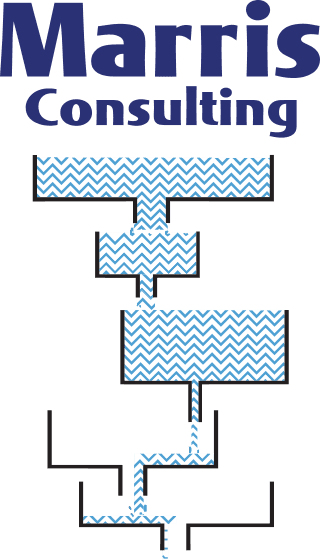Publications
- Home >
- To go further >
- Publications >
- Critical Chain & MRO
Critical Chain & MRO

How can a new approach to project management reduce the immobilization of planes on the ground?
All aircraft, civil or military, must periodically undergo more or less extensive maintenance visits, depending on their age and use. Reducing downtime is a key success factor for airlines, as well as the military and civil defense units.
For this, the implementation of a new project management approach, called Critical Chain, has demonstrated its relevance in different cases.

To enrich your experience, Marris Consulting organizes training sessions on the Critical Chain.
Aircraft maintenance (MRO) is managed as a project
The acronym MRO designates the three types of intervention which are Maintenance, Repair and Overhaul, which set out in this order are increasingly advanced interventions.
Interventions requiring in-depth visits follow the steps disassembly, verifications, tests, exchanges, reassembly and validation that range in function of the accessibility to the different parts and organs to be checked. This describes itself as a project, with a diagram of the different phases - the Gantt diagram - and can be managed like any other project.
However, during inspections, unexpected anomalies, wear or deterioration may be revealed, requiring additional and unforeseen interventions, therefore unplanned.
This is where the Critical Chain Project Management approach differs from the traditional approach, known as the "critical path", because it is tolerant of hazards while guaranteeing (under certain conditions) the deadlines announced.
This is due to the planning method itself, which pools the various safety margins for the benefit of the entire project and the allocation of specific time for the hazards called "findings": the discovery of unforeseen problems. These specific allocations are sized according to statistics on past similar maintenance, age and knowledge of equipment at risk.


Tested on the french Air Force Transall
The AIA (Atelier industriel aéronautique) of Clermont-Ferrand, one of the four maintenance workshops of the Aeronautical Industrial Service (SIAé), placed under the tutelage of the Chief of "état major" and in charge of maintaining aircraft in operational condition, applied the Critical Chain Project Management approach successfully on the C160 Transall.
The results of the case, published in the magazine MESURES n ° 818 of October 2009 and presented by the persons in charge during a conference at the Maison des Mines (Paris) in November 2013, speak for themselves:
-
Reduction of aircraft maintenance time by 15%
-
Reduction of plane immabilisation from 150 to less than 100 days
-
Reduction of aircraft in progress from 6 to 3
-
87% improvement in service rate
-
More than 1000 additional flight hours per year (and therefore reduction in the need for jumbo jet rentals)
-
15% increase in workshop throughput with 13% fewer resources
-
Unchanged level of quality
-
A maintenance dock freed up
-
Improvements in terms of quality of work and management

US Marine Corps
The military understands the value of reducing MRO downtime to increase the operational availability of their assets.
The Maintenance Center for the Marine Corps Logistics Base, in Albany, Georgia, launched a program combining Critical Chain Project Management and Lean in 2001. The implementation involved a range of specialized vehicles and has been presented at conferences and video reports

Civilian MRO actors too: the Lufthansa case
Lufthansa Technik, the maintenance provider of the German transporter, published its own experience conducted in Frankfurt in its magazine of July / August 2013. Critical chain Project Management is designated as the “magic formula” allowing to meet the challenges of complex, difficult and very varied interventions with short notice.
The implementation and results were presented at a conference in 2011 while the project was still underway. Regarding the times of heavy interventions, the presenter reports 15 to 20% reduction. The presentation is fully and freely accessible on the Realization Youtube channel.

Marris Consulting and Embraer Executive Jets
To stay in aeronautical maintenance and by way of example, Marris Consulting accompanied the Embraer Executive Jets service center at Le Bourget Airport. With a similar approach, the duration of the jets' turn around time (TAT) has been reduced by more than 50%, delivery delays have been almost eliminated, productivity has been improved by more than 13% and the management of operations has been notoriously simplified.
f the term “executive jet” evokes private planes of wealthy clients, it also includes “flying ambulances” (Medivacs) used for medical repatriation. We understand that in such a case, reducing Turn Around Time and improving operational availability could prove to be particularly important.
Beyond aeronautics
Because of the costs incurred by aircraft maintenance, aeronautics is a pioneer in the application of "Critical Chain Project Management" and Lean approaches to maintenance operations. These nonetheless find their application in any MRO activity in order to improve the quality of service by reducing the downtime of equipment. We think of railway rolling material, buses and coaches, but also of industrial installations during major visits or even when moving sites, machinery or equipment.

